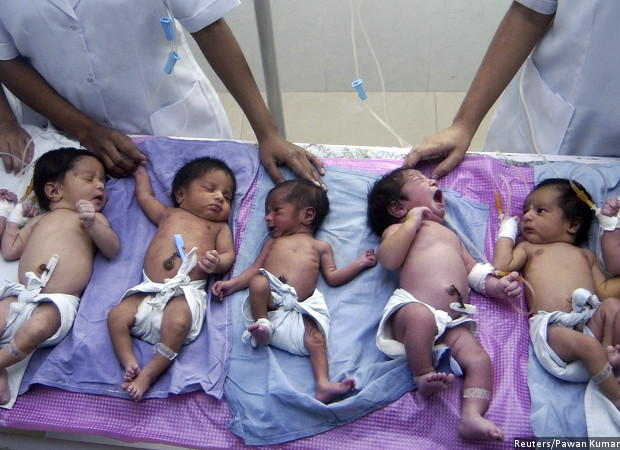19 Million Women In India Have 7+ Child Births
As many as 19 million women in India have given birth to seven or more children, and 15 million (80%) of these women live in rural areas, according to an IndiaSpend analysis of recently released census data.
This is equivalent to Niger’s population, a country in Africa having a fertility rate of 6.76. The countries having the highest fertility rates in the world are mostly situated in Africa.
There were fewer such women with higher levels of education, the data further reveal--15 million of those women were illiterate as against 0.09 million who were graduates and above.
Educated women have fewer births, average births per woman declined since 2001
The average births per woman in India is 3.3, a decline of 13% from 3.8 in 2001, based on the total births given by women in the 45-49 years age group (which marks the end of their child-bearing age), according to World Health Organization.
The Central Intelligence Agency (CIA) estimates India’s average fertility per woman at 2.48 which is the highest among BRICS nations and just better than Pakistan in the sub-continent.
Nepal, Bhutan, Sri Lanka and Bangladesh have lower fertility rates.
Though the CIA data differs from the Census, trends indicate that Indian women have higher fertility rates than sub-continent countries and other similar economies.
The average births decline with increase in education levels, according to Census data. The average births for women who are graduates and above is 1.9, against 3.8 for women who are illiterate.
The spread of female education is a likely cause for falling fertility among women, according to this report by The Economist. Female literacy in India increased from 53.7% in 2001 to 64.6% in 2011, according to Census data.
As many as 1,423 females in rural areas have never attended any educational institution for every 1,000 males who have not done so, and only 577 females attend college for every 1,000 males in rural areas, IndiaSpend reported earlier.
Note: The average child-bearing age for a woman is 15-49 years, according to the World Health Organization. Therefore, we have taken 45-49 years as the sample set for determining the average children per woman.
320,000 girls below age 15 have already reported two births
As many as 0.32 million girls who are married and aged less than 15 years have given birth to two children--an increase of 88% since 2001, when the figure was 0.17 million.
Further, 0.28 million married girls in the age group of 15-19 years have already given birth to four children, which is an increase of 65% from 0.17 million in 2001.
Adolescent pregnancy can lead to several health problems--anaemia, malaria, HIV and other sexually transmitted infections, postpartum haemorrhage and mental disorders--according to World Health Organization.
Nearly 12.7 million girls in India aged between 10-19 years are married and six million children were born to them, IndiaSpend reported earlier.
Notes:
- “All ages” includes “age not stated”.
- “Literate” includes figures for “literates without educational level” and “educational levels not classifiable”.
- “Ever married women” includes currently married, widowed, divorced and separated.
- “Matric/ secondary but below graduate” includes “non-technical diploma and certificate not equal to degree”.
- Due to the above caveats, there may be some overlaps in the data. Hence, adding sub-headings cumulatively may not equal the overall figure.
(Saha is a freelance journalist based in New Delhi.)
We welcome feedback. Please write to respond@indiaspend.org. We reserve the right to edit responses for language and grammar.
__________________________________________________________________
Liked this story? Indiaspend.org is a non-profit, and we depend on readers like you to drive our public-interest journalism efforts. Donate Rs 500; Rs 1,000, Rs 2,000.



